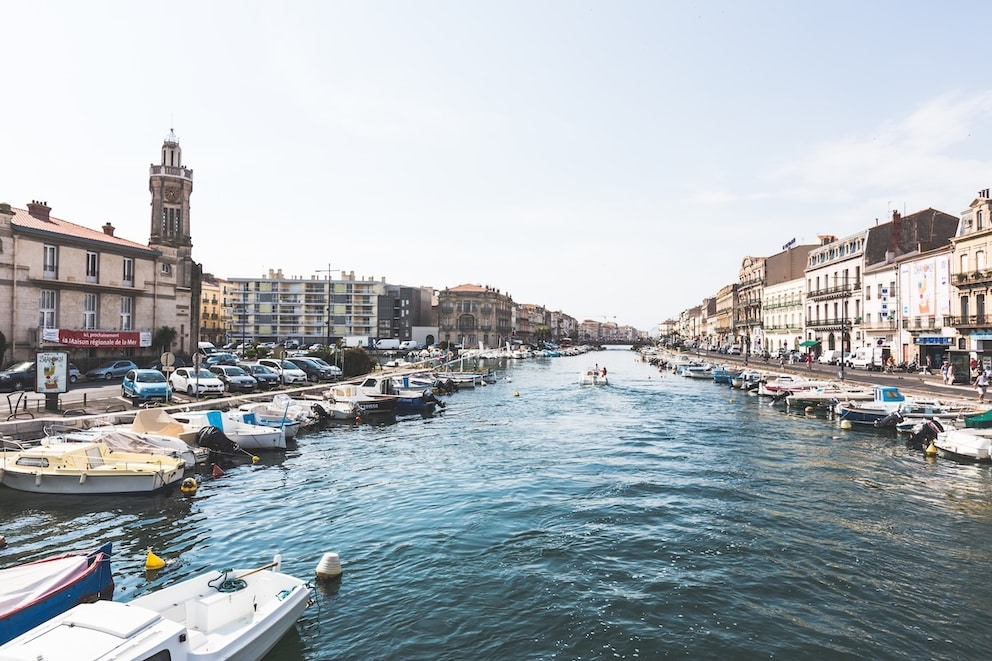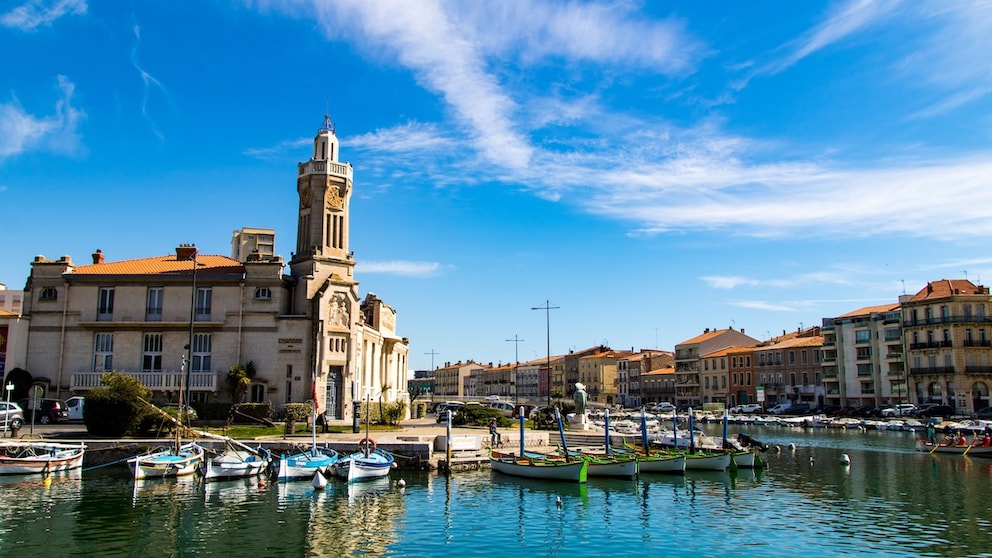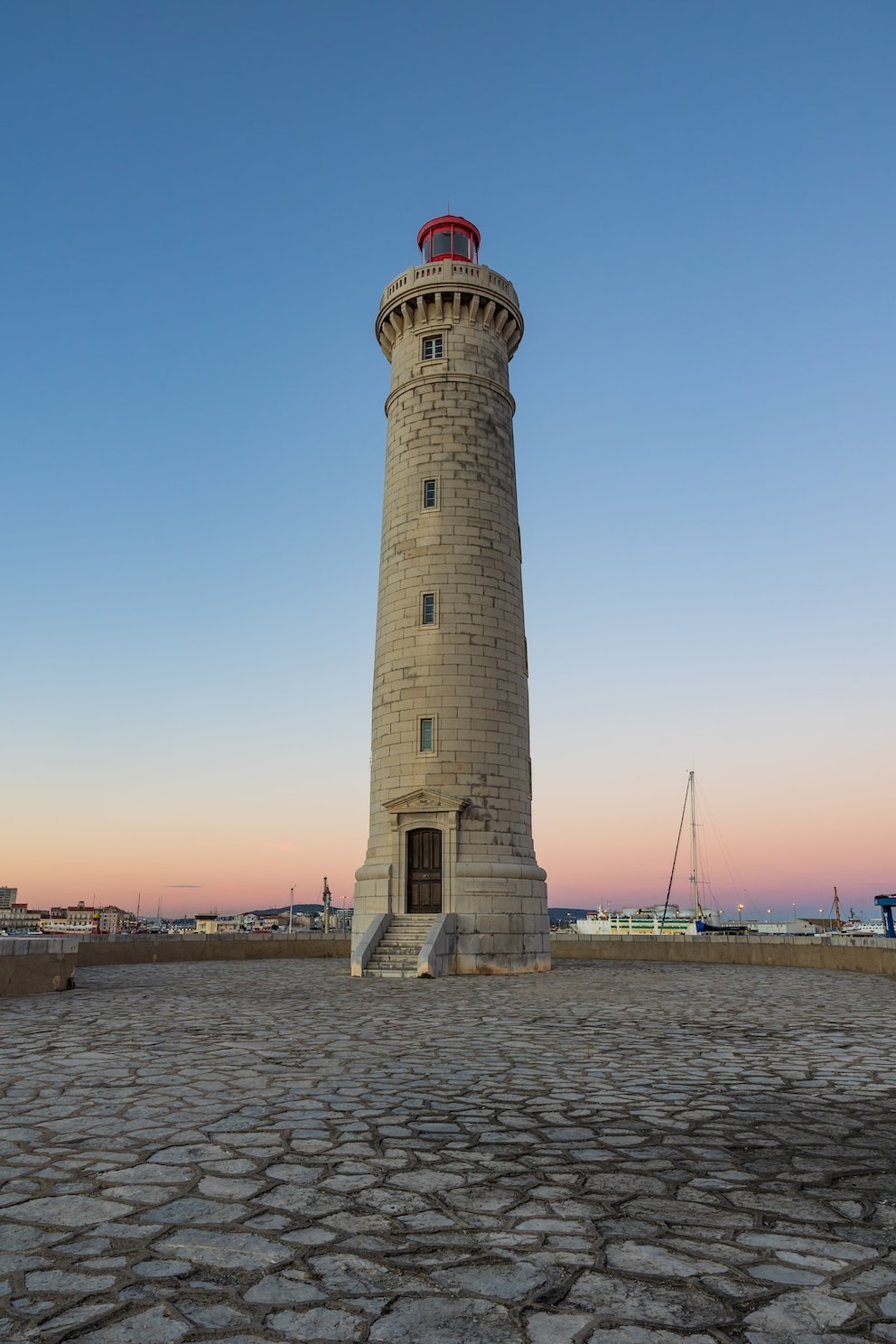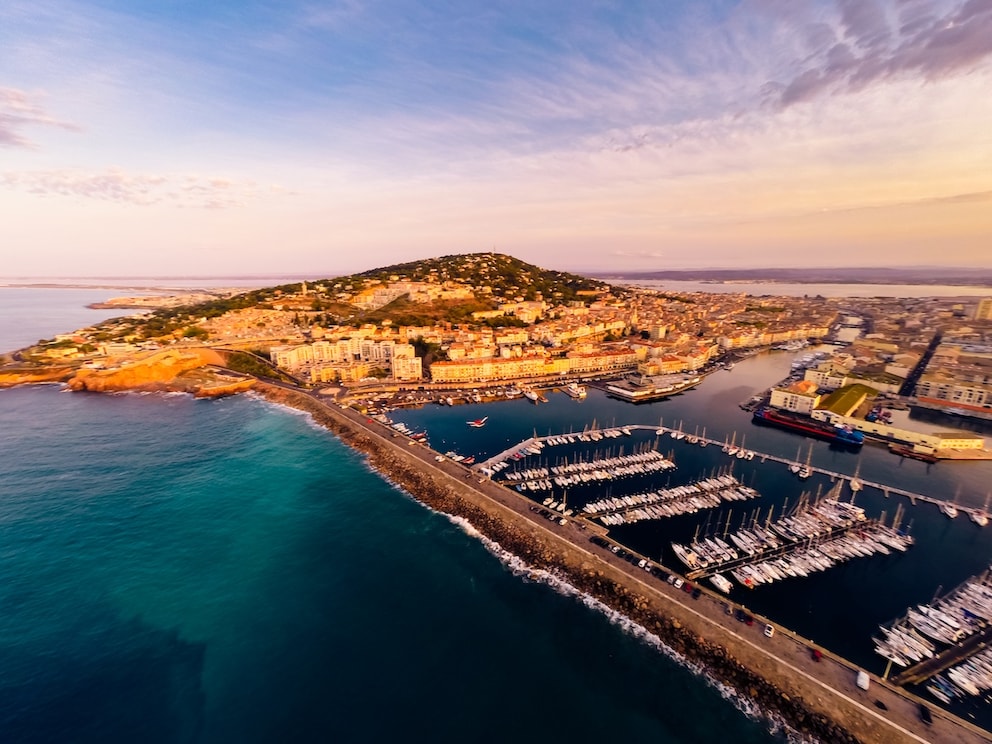July 10, 2025, 4:47 pm | Read time: 6 minutes
Nice is considered the epitome of the French Riviera–with its palm-lined promenade, turquoise sea, and unmistakable blend of southern French elegance and international jet set. But with the glamour come the downsides: high prices, dense crowds, and a city that barely rests during peak season. Those yearning for Mediterranean charm, good food, and sea views, while prioritizing authenticity and relaxation, should consider Sète.
The port city of Sète is located about 30 kilometers southwest of Montpellier–right on the Mediterranean and yet far from the hustle and bustle of the Côte d’Azur. Instead of luxury hotels and cruise tourism, boats, bridges, and canals define the scene here. The place is known as the “Venice of Languedoc” and represents Mediterranean joie de vivre, a creative scene, and a genuine South of France feeling. Those who want to experience France away from the jet set will find it here.
Overview
Where exactly are Sète and Nice in France?
Nice is located in the far southeast of France, right on the famous Côte d’Azur. The city is part of the Provence-Alpes-Côte d’Azur region and stretches along the Mediterranean coast between Cannes and Monaco. With over 350,000 residents, Nice is one of the largest cities in France and a central hub for international tourism, cruises, and trips to the South of France. Nice Côte d’Azur Airport is one of the busiest in the country.
Sète is about 350 kilometers west of Nice, in the Occitanie region, approximately 30 kilometers southwest of Montpellier. The city has around 45,000 residents and is nestled between the Mediterranean and the large Étang de Thau, a lagoon known for its oyster farming. The geographical location makes Sète a great mix of port city, seaside resort, and lagoon landscape. Thanks to direct train connections and proximity to Montpellier Airport, the city is easily accessible despite its tranquil location.
What makes Sète an alternative to Nice?
Nice is undoubtedly impressive: a vibrant metropolis with an international crowd, palm-lined boulevards, and exclusive beaches. Sète is different–smaller, more relaxed, more authentic. The city feels almost village-like compared to Nice, without being sleepy. Life unfolds on the streets and canals, in the market halls, and small bars by the harbor. The atmosphere is French-Mediterranean but down-to-earth: less jet set, more real life. And that’s what makes Sète so appealing–especially for travelers who long for culture, nature, and enjoyment but want to avoid mass tourism and high prices.
Price-wise, Sète is also much more relaxed. Accommodations are cheaper, and dining and entertainment are more affordable. Instead of beach clubs and gourmet restaurants, visitors can expect fresh fish from the market, simple cafes with sea views, and a glass of Muscat from the region. The crowd: more art lovers, individual travelers, and France fans who prefer peace over being seen.
Sights in Sète
Canals of Sète
The canals run through the center and give Sète its nickname “Venice of Languedoc.” Especially around the Canal Royal, bridges, boats, cafes, and historic buildings line up–an ideal place for a stroll or a small boat tour.

Mont Saint-Clair
The city’s local mountain is about 180 meters above sea level and offers a wide panoramic view of the Mediterranean, the lagoon, and the city’s rooftops. Those who don’t shy away from the climb will be rewarded with one of the most beautiful views in the South of France.
Halles de Sète
The market hall is the culinary heart of the city. Locals buy fresh fish, oysters from the Étang de Thau, cheese, fruit, wine, and everything else the region has to offer. It’s also worth a visit for breakfast or lunch.

Musée Paul Valéry
The art museum is dedicated to the writer and philosopher Paul Valéry, who was born in Sète. In addition to works by regional artists, the museum also features changing exhibitions and offers an impressive view of the sea.
Théâtre de la Mer
This open-air theater right above the waves is one of the most spectacular venues in the South of France. In summer, concerts, plays, and festivals take place here–with sunsets and the sound of the sea included.
Saint-Louis Lighthouse
At the end of the Saint-Louis pier, which protects the old port of Sète, stands the distinctive Saint-Louis Lighthouse. Those who climb the 126 steps will be rewarded with a panoramic view of the sea, the city, and the harbor entrance.

Lido Promenade
Between the city center and the beach stretches the modern Lido Promenade, ideal for walks, bike rides, or the way to the sea. It connects several beach sections and offers views of the water along the way.

Quartier Haut
The Quartier Haut is the oldest district of Sète–winding, original, and full of character. With its steep alleys, colorful houses, and small squares, it is reminiscent of southern Italian coastal towns. Today, the district is considered the creative center of the city: quiet, charming, and full of studios, galleries, and small eateries–all without tourist hustle and bustle.
Also read: Unknown places and real insider tips on the Côte d’Azur
Traveling to Sète
Despite its tranquil location, Sète is easily accessible–both by train and by air. Sète is on the railway line between Montpellier and Béziers and is directly connected to the French TGV network. The journey from Paris takes about four hours, and from Montpellier, it’s less than 30 minutes. There are also regular connections from Marseille, Lyon, or Toulouse without much effort.
The nearest airport is Montpellier-Méditerranée–about 35 kilometers away. From there, a shuttle or a regional train goes directly to Sète. Alternatively, Béziers Airport is an option, mainly served by low-cost airlines. Those arriving via Nice or Marseille can also continue by train–the route along the coast is scenically appealing.
Sète is also easily accessible via the French highway network. The city is close to the A9 (La Languedocienne), which runs from Orange to the Spanish border. Parking is limited in the city center, but there are several parking garages near the harbor.

The best route for a road trip along the French Atlantic coast

Vacation in Lyon? What you should not miss

It’s as Beautiful Here as on Crete – Only Less Crowded
Sète on the Map
On the map: Small section of southern France. Red dot: Sète; Red circle: Nice.


